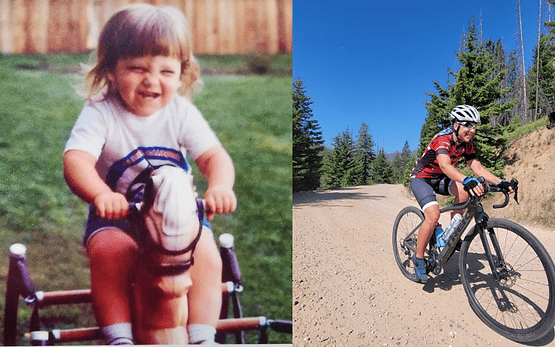Who Am I: How to Quiet Your Inner Critic (Part 5)
In Part 4 of this series, we learned about self-discovery and the Self as described by Internal Family Systems (IFS). Remember the symphony analogy? The Self is like the conductor, guiding and harmonizing the orchestra of your inner world. This inner knowing, or your “true nature,” helps you connect with and understand your parts, leading to peace and alignment. As a result, you feel more stable, balanced, and capable in the world.
However, one part of us can disrupt this balance. You likely know it well- the inner critic. Do you know how to quiet your inner critic? The most skillful way might surprise you. Today, we’ll meet this part and use IFS to connect with it. As a result, you’ll feel less fragile in the world.
How to Quiet Your Inner Critic: Setting the Stage
I’d like to share with you a conversation I’ve had with my own inner critic. I’ll use this to illustrate what it can look like to meet a part with self-energy present. This is an ongoing practice for me, much like meditation. But it’s a practice that goes deeper. When I feel a specific emotion, notice a body sensation or energy shift, or observe a thought that feels activating or triggering in some way, I turn toward it, much like a compassionate detective. This is different from meditation in that we’re moving beyond non-judgmental awareness to non-judgmental acceptance and then appreciation.
Awareness, Acceptance, & Appreciation: The 3 Steps
Awareness is noticing or observing. It sounds like, ” I see this.”
Acceptance is something altogether different, yet it requires awareness. Acceptance is an active acknowledgement of the reality of the situation, but it’s still without judgement. Many mistake it for acquiescence, which feels like giving up and has a passive quality to it. Instead, acceptance is courageously active. It gives us a sense of unveiling, like that of pulling our heads out of the sand, and seeing the situation for what it is. No judgement, just the truth.
Importantly, you don’t have to like what you see, but if you can notice even a small amount of curiosity about it, your heart will open to the next step. Acceptance sounds like, “I see this for what it is.”
Appreciation, then, is acceptance expanded. We take the truth and actively integrate it for the purpose of processing and digesting it. Appreciation sounds like, ” I see this for what it is, and I will turn toward it with compassion and curiosity, so I may learn from it.”
The Inner Critic Conversation
In the conversation with my inner critic, you will see the shift from awareness, to acceptance, to appreciation, and beyond. I will share my personal process, but please know I have a lot of practice accessing self-energy, and what I might encounter while facilitating an interaction with a client and their parts might look different and take a bit more time.
This conversation was initiated after I noticed a thought rush into my mind when I received a notification that my husband had changed his Facebook profile photo. This thought was, “How bad do I look?!”
When I flipped to see what photo he had chosen, the thought that zoomed in, landing with a thud in my mind was, “Your legs look fat!”
How to Quiet Your Inner Critic: Shifting from Awareness to Acceptance
Awareness: observing that the thoughts were present/that a part was present.
Now, what most people might do at this point is believe the thoughts of that part showing up and inquire about how to quiet your inner critic.
Because the thoughts often prompt a sense of shame and unworthiness (another vulnerable part being triggered), which might then prompt a behavior designed to protect from feeling those waves of vulnerable emotions(a firefighter part there to put out the flames of emotion that threaten to consume us).
This was often the sequence of events that occurred for me, the firefighter part driving food restriction and overexercising behaviors. There was no separation between Self and these parts. As you understand now, however, the various parts of us have different intentions, agendas, beliefs, and emotions, and will prompt specific behaviors, often destructive or dysfunctional in nature, but firmly believing they are doing what’s necessary, because of a lack of Self presence.
Accessing Self-Energy: A Compassionate Response
Knowing that I have a Self (aka, my inner knowing, my core, my heart), separate from my parts (we all do), however, I am able to turn toward that part (the Critic) and let it know I’m there. Assessing for acceptance (or otherwise), I asked myself how I felt about the Critic.
Knowing How to Quiet Your Inner Critic Means Relating, Not Raging
What arose was a sense of interest, compassion, and connectedness with it. In that moment, the sense of calm I felt toward it was my acceptance indicator. If instead, I noticed a tightness in my throat or a thought like, “I hate it!”, then I would know there was another part (not Self) present. The Self, remember, is pure, accepting, and non-judgmental. In my case, with Self-energy present, I could begin a process of friendly conversation.
The Practice of Acceptance in Action
Acceptance: the reality of the situation is that a part of me showed up with thoughts regarding my body.
Please note, this is for illustrative purposes only. It might look very different for you, especially if you are new to this work and are just learning to access your Self-energy.
Kori: I hear you loud and clear. What do you need me to know?
Critic: If you are fat you will be rejected and labeled as illegitimate. Remember what happened with Aaron? He criticized you for not being more in shape.
Kori: I understand your concerns.
Critic: It was horrible!
Kori: Yes, it was. It was very hurtful what happened, being criticized for not looking the part.
Critic: I won’t let that happen again!
Kori: I know you’re working hard to protect me from feeling so small and vulnerable, invalid, and unworthy. But I need you to know that when that happened, I didn’t have the skills to meet the moment differently. Now, I do. I can lead us down a wiser path. I can also do the protecting of that part of me that carries the pain of that rejection, so you don’t have to anymore. Would you like that? To be able to relax and not have to work so hard? To be able to do something else?
Critic: Yes, I would. I want to.
Kori: I understand. You’ve been doing this job for a really long time, and I have noticed that you’ve relaxed over time. If I continue working toward healing the part that you’re protecting, show you that it’s possible, would you give me the chance?
Critic: Yes.
Kori: Thank you. I don’t want you to go away, but if you can give me some space, I can work with the younger, vulnerable part that’s carrying the fear and the pain of rejection.
Appreciation and Transformation
Here’s where appreciation showed up: when I expressed gratitude to the Critic for protecting me from feeling small and unworthy. The Critic acts as the gatekeeper to the wounded part of me that holds the pain from a past experience.
To give you a sense of that pain, let me share a memory. In college, a boy I had a crush on asked me what my major was. I excitedly told him I had chosen exercise physiology. He responded, “Aren’t exercise physiologists supposed to be in better shape?”
This is a glimpse of what it sounds like when I connect with my inner parts. Now, I can easily access the wounded part of me without spending much time validating the protective Critic. My Self-to-part relationship is strong and trusting. The Critic now backs off because it knows I will show up and lead us.
Healing and Integration
As for the part that was wounded, I’ve spent a lot of time with her too, and she’s been able to release much of what she was carrying– the burdens of pain, unworthiness, and invalidness. She lives inside of me with a more carefree spirit. In IFS terms, with my guidance, she has transformed into her naturally valuable state, embracing spontaneity, levity, and playfulness. Below is what I imagine her like, inside of me (left photo). And you can see her coming through today (right photo) because she asked to be with me, by my side. I promised I would not leave her, that I would always take care of her.
When the critic shows up, I gently remind that part of me that the younger part it developed to protect is happy, free, and safe.

For Your Practice: Understanding Your Inner Critic
In a world inundated with societal pressures and unrealistic beauty standards, many of us hear an inner critic that is quite relentless, admonishing us for not meeting society’s standards of beauty, urging us to be thinner and pointing out perceived flaws in specific areas. Most of us have received advice to fight back against this critic, banish it, and beat it into submission. But if you’re like me and 99.99999% of people I work with, this approach hasn’t been effective! What we need instead is to meet the critic with Self-energy and foster understanding and compassion towards it so we can truly get to know its intentions, the reasons it’s doing what it’s doing, and what it’s protecting!
Understanding the Critical Part:
This critical part that berates our bodies and appearance, eating, or food choices often emerges as a protective mechanism. Its intentions root in a desire to shield us from potential rejection, criticism, or perceived inadequacy. By perpetuating an environment of internal demands and critique, it pushes us to conform, hoping to ensure that we accept, value, and feel a sense of belonging.
Meeting the Critical Part with Self-energy:
- Cultivating Self-Compassion: Recognize that the critical part within is ultimately trying to protect and guide you, albeit in a flawed manner. Approach it with compassion, acknowledging its presence and the underlying fears or insecurities it carries. Bring kindness and gentleness as you engage with this part.
- Active Listening and Dialogue: Create a safe space for open dialogue with the critical part. Set aside time in your journaling practice to allow it to express its concerns, fears, and intentions. Ask questions and actively listen to its voice without judgment. Seek to understand the deeper reasons behind its critical messages.
- Identify Patterns: Observe the situations, environments, or other outside circumstances that amplify the critical part’s voice. Then do the same for your internal world. Awareness of both your internal and external worlds can help you recognize when the part becomes activated and the part of you that it seeks to keep hidden.
It may not be the inner critic part that you’re most interested in getting to know. That’s okay! What part of you do you feel curious toward? Start there.
Please share what you’re learning through this blog series! Leave a comment and share with a friend who could benefit.





